Growing in Lousy Soil: Fierce Flowering Shrubs
Want to know what shrubs will grow in your lousy soil? Learn about the five fiercest shrubs and how you can find success growing shrubs in your yard.
Gardeners will be able to solve a few more landscape deficiencies this year with the arrival of some innovative new shrubs, including a line of blight-fighting boxwoods, a mock orange that reblooms, and an all-new woody plant called a "desert orchid."
Here are seven 2024 newcomers to check out:
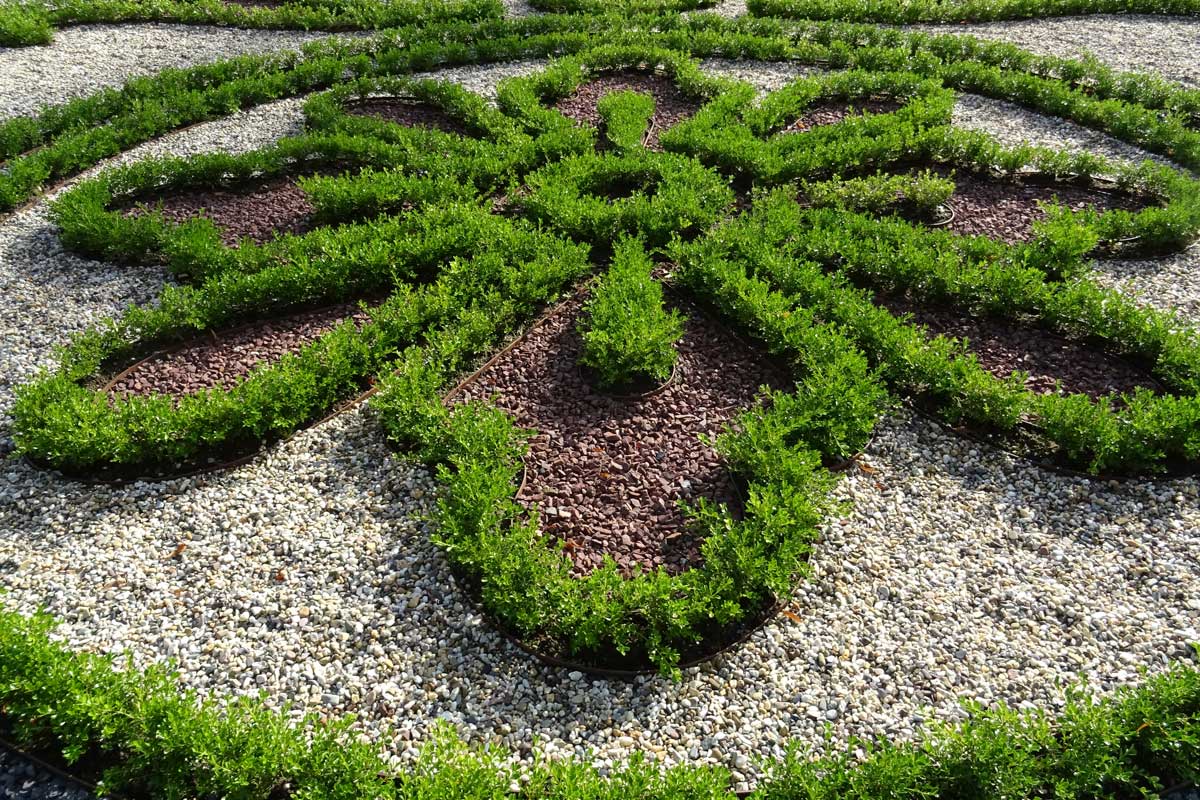
Disease-resistant Better Boxwood Renaissance™. Image courtesy Garden Media Group
A boxwood-killing blight that’s spread throughout most of the eastern U.S. and to several west-coast states touched off a race to produce varieties that resist this deadly fungal disease.
Saunders Genetics was first out of the gate three years ago with its two-variety NewGen series. New from the Alabama-based Plant Development Services for 2024 is a second blight-resistant line called Better Boxwood.
Dubbed “The Blight Fighter” with a super-hero logo, Better Boxwoods debut in four choices: Skylight (a fast-growing upright maturing at about eight feet tall and three to four feet across), Babylon Beauty (a more horizontal type growing about three feet tall and four to five feet wide), Heritage (a rounded shrub that’s slightly taller than wide at four-by-three feet), and Renaissance (a compact variety growing into a two-by-two-foot ball).
The Skylight variety won a 2024 National Garden Bureau Green Thumb Award for best new shrub in People’s Choice voting.
Better Boxwoods are highly deer resistant and tolerate a wide range of light, from full sun to mostly shade. They’re hardy in USDA Zones 5-9.
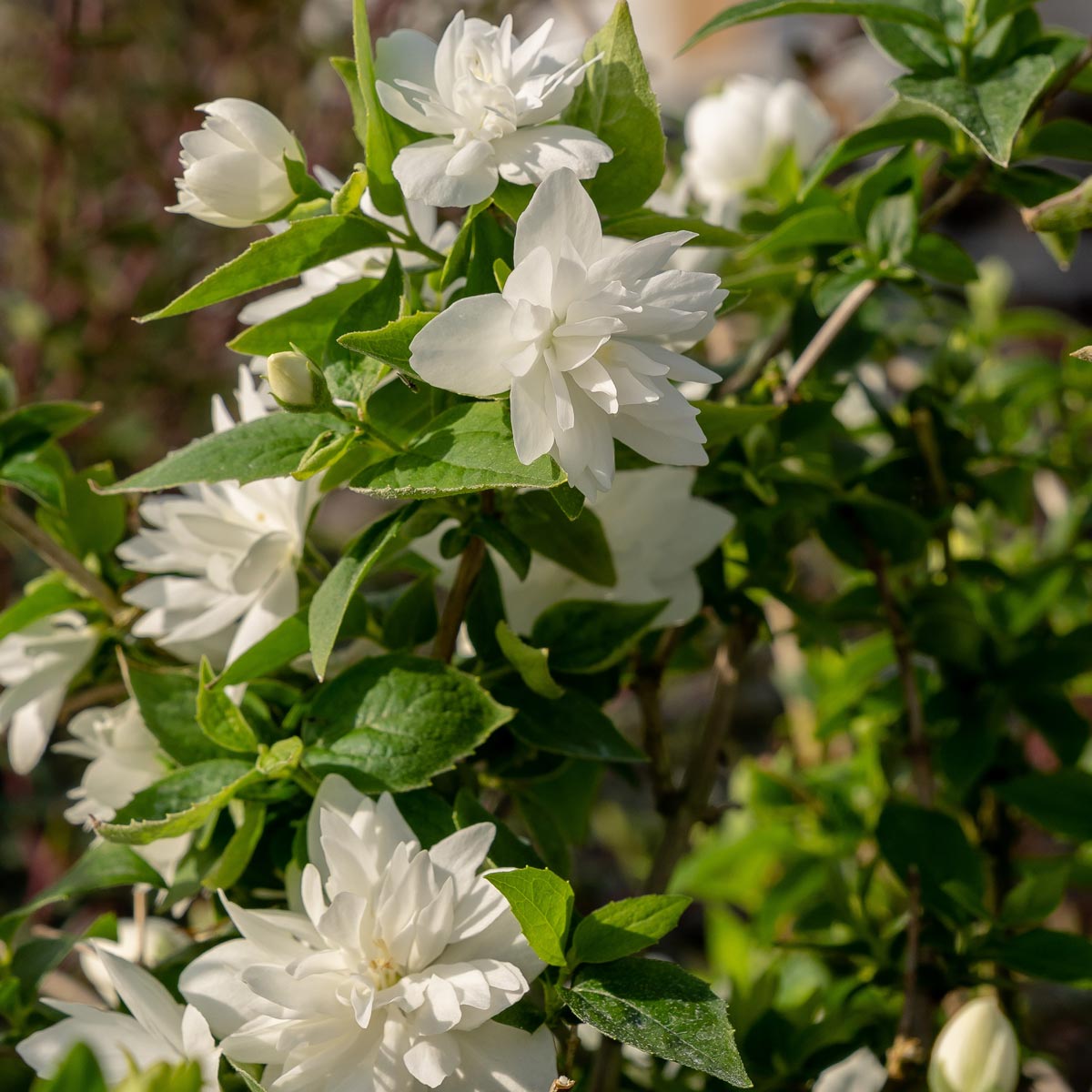
Mock orange Pearls of Perfume™. Photo courtesy Garden Media Center
Mock orange is an old-fashioned shrub beloved for one main attribute – its strong, sweet fragrance when the flowers are in bloom for two or three weeks each May. The rest of the year, it’s a nondescript, gangly shrub that sometimes even stops blooming altogether.
Southern Living Plants’ new Pearls of Perfume variety earns mock oranges new attention for two big improvements – much longer bloom and a neater, compact size. Its white double flowers are fragrant but keep coming throughout much of summer, while the plant’s size tops out at about four to five feet tall and three to four feet wide.
The variety does well in full sun to part shade and is rated for USDA Zones 5a to 8b.
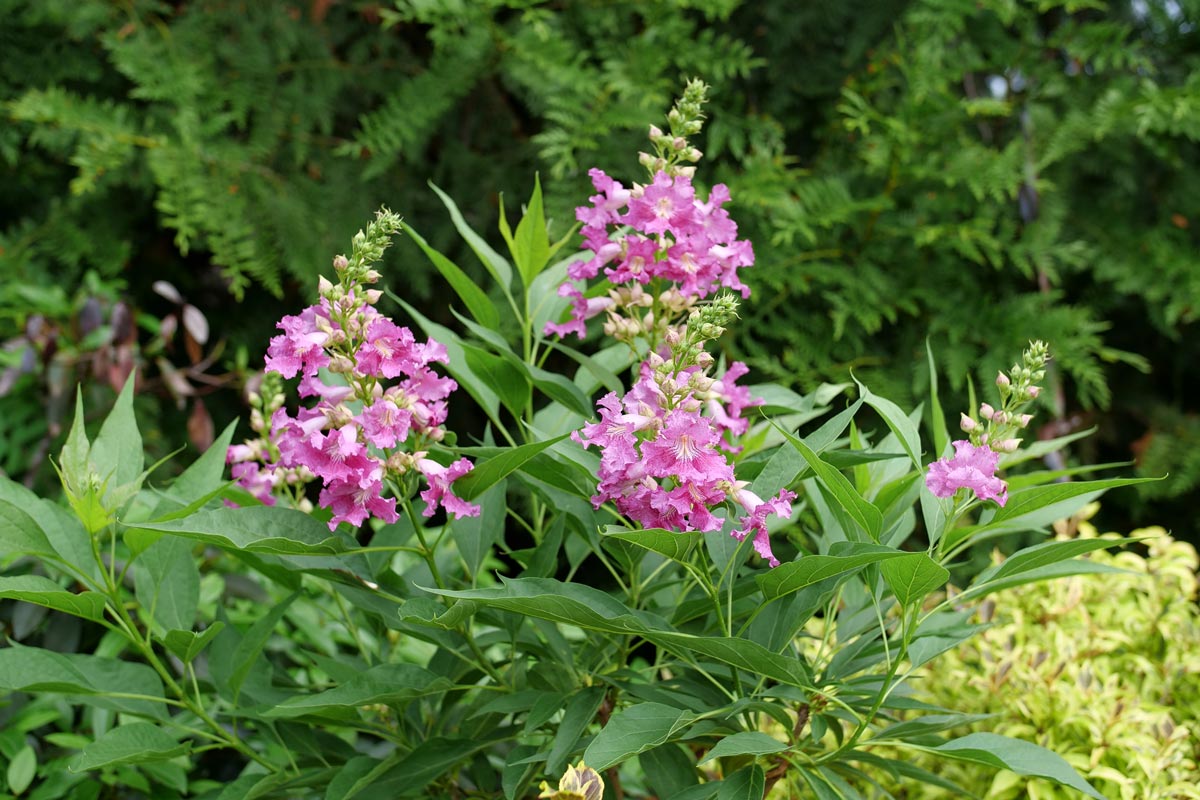
Desert orchid El Niño®. Photo courtesy Proven Winners
If you’re looking for something nobody else in the neighborhood has, check out this new hybrid of two North American native plants – the desert willow and the catalpa tree.
The result of this cross has been dubbed “desert orchid” (botanically “chitalpa”), and Proven Winners is introducing a variety of it called El Nino.
El Nino has pinkish-purple flower spikes that look somewhat like oversized snapdragons. It’s not heavy in the bloom department, but the flowers it gets are attractive, mildly fragrant, and long-lasting through much of summer.
Plants grow about five to eight feet tall and four to six feet wide, ideally in full to part sun and in good drainage. It’s hardy in USDA zones 6-9.
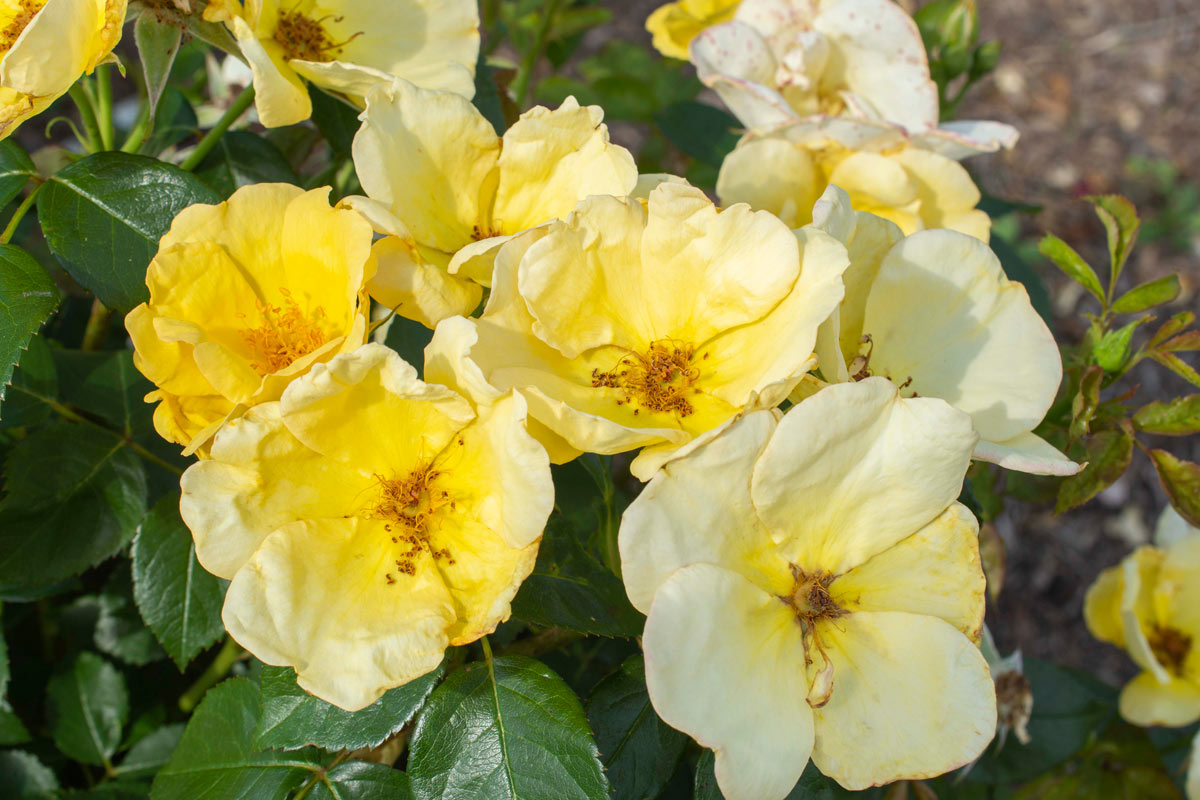
Yellow Easy Bee-zy Knock Out rose. Image courtesy Star Roses and Plants
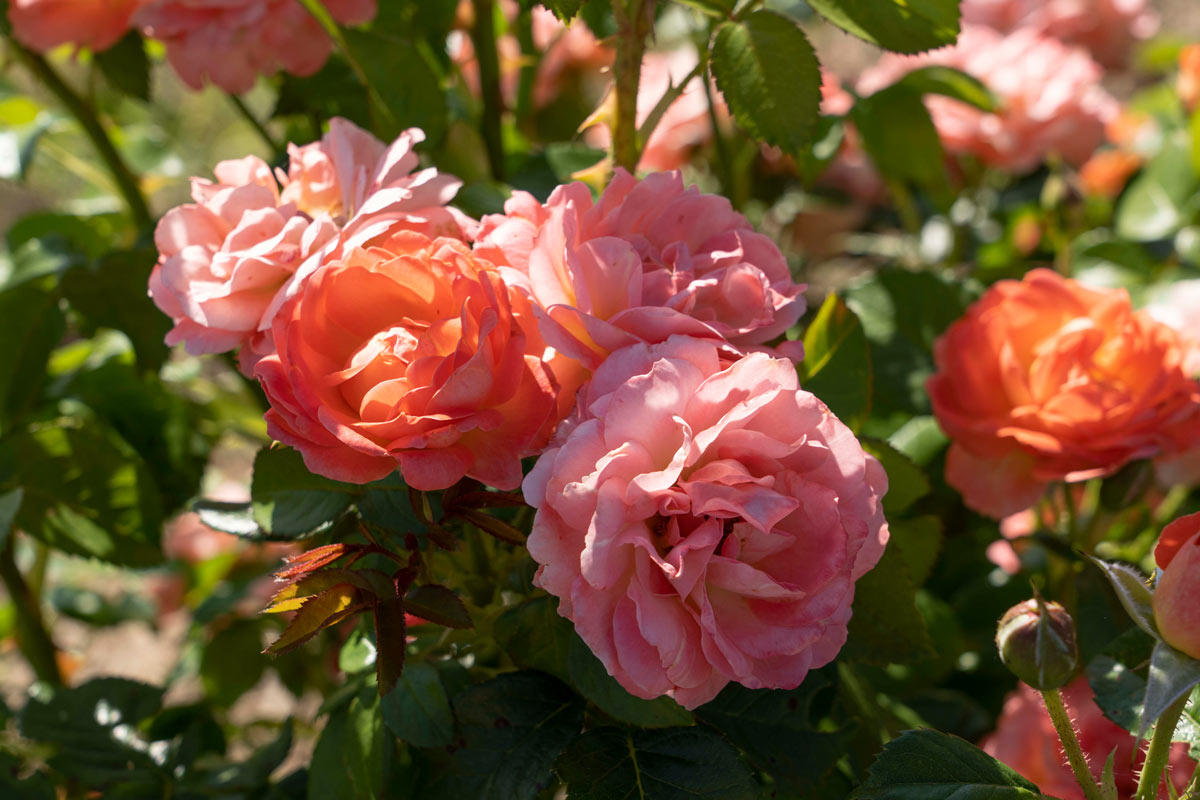
Orange Glow Knock Out rose. Image courtesy Star Roses and Plants
Far more familiar than desert orchid is the Knock Out shrub rose, which rates as one of America's best known and most bought landscape plants.
Star Roses and Plants is adding two new versions to its existing 11-variety Knock Out family in 2024 – a yellow-blooming one called Easy Bee-zy and an orange bloomer with hints of yellow and pink called Orange Glow.
Easy Bee-zy has a bushy, rounded habit of about three to four feet tall and three feet wide. It produces mildly fragrant, soft yellow flowers throughout most of the growing season.
Orange Glow is a bit taller at four-and-a-half feet by three feet and also blooms most of the growing season.
Knock Out roses perform best in full sun but also do reasonably well in part shade. Both of the new varieties are rated for USDA Zones 4-11.
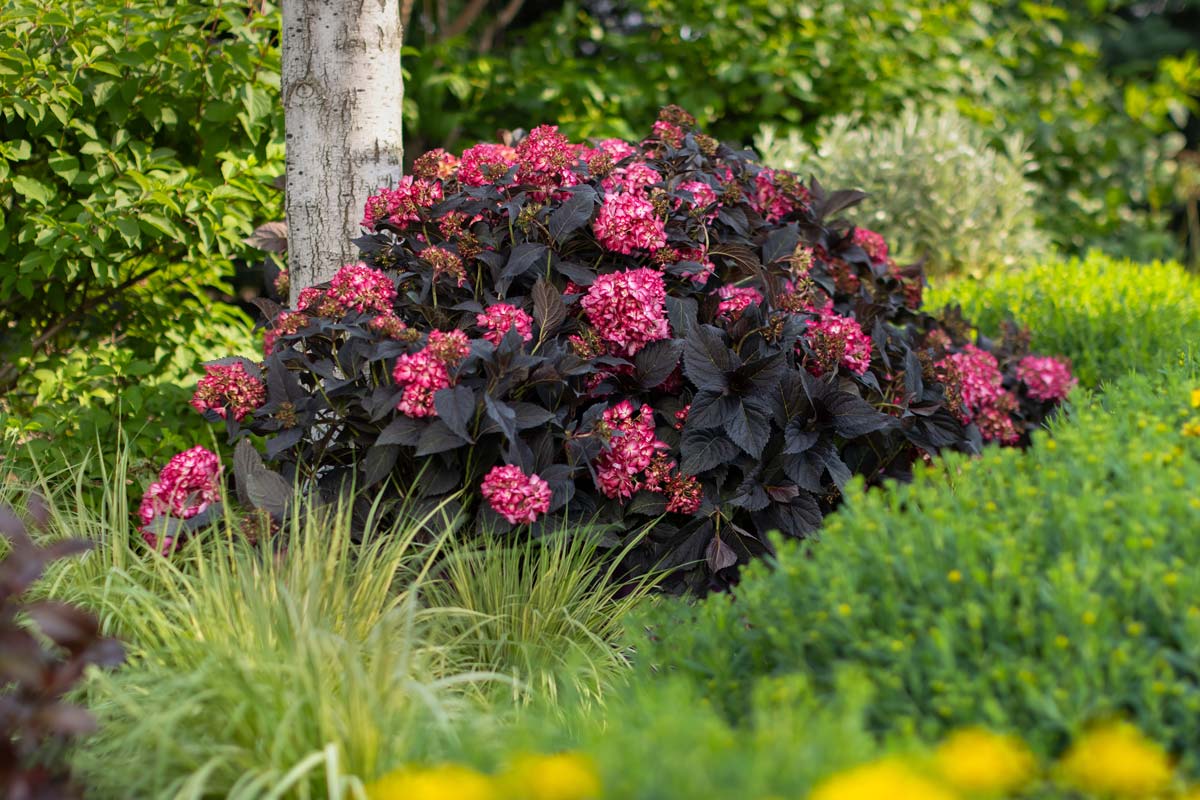
Eclipse® Bigleaf Hydrangea. Image courtesy First Editions® Shrubs & Trees
This new bigleaf hydrangea in Bailey Nurseries’ First Editions line is being touted as the "first true dark-leaf mophead hydrangea."
Ryan McEnaney, "Field Guide to Outside Style" author and Bailey communications manager, calls Eclipse an "impressive bloomer and solid garden performer." But he says what really sets the variety apart is its "dramatic" dark-purple leaves that hold their color even in warm weather.
The dark leaves pair nicely with the ball-shaped, dark-purple to cranberry-colored blooms, McEnaney adds.
Eclipse turned enough heads at last summer's AmericanHort Cultivate show that it won a Retailers' Choice award as a new plant with the potential to become a garden-center best-seller. It also won the 2024 National Garden Bureau Professional Choice Green Thumb Award as the year's top new shrub.
Eclipse is rated for USDA Zones 5-9.
Blue hollies are a durable, workhorse evergreen, but most of them can grow six to eight feet tall and wide over time.
New for 2024 from California’s Monrovia growers is what’s being billed as the most compact female blue holly yet. LittleOne grows in a compact, rounded habit to only about three feet tall and wide.
"It’s perfect for a low hedge or foundation planting," says Monrovia’s plant selections manager Georgia Clay of LittleOne. "And it covers itself in red berries in fall and through the winter."
The female LittleOne needs a male blue-holly pollinator within about 30 feet to set fruit. ('Blue Prince' and 'Blue Stallion' are two commonly sold males.)
Blue hollies grow best in sun to part shade and in slightly acidic soil. LittleOne is rated for USDA Zones 5-9.
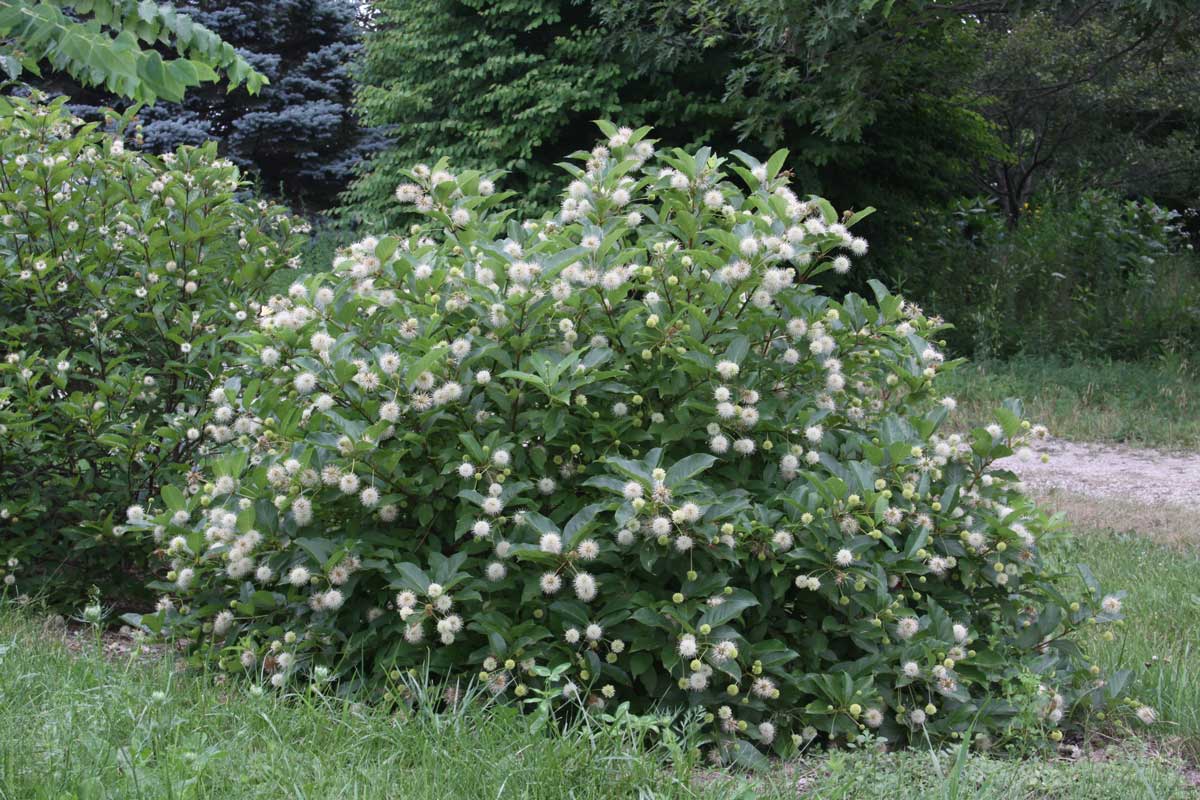
Buttonbush Magical® 'Moonlight'. Image courtesy Plants Nouveau
Pollinator gardeners might be interested in this new native buttonbush variety that’s both heavy-blooming and compact.
"(Magical Moonlight) has more flowers and fruits than Sugar Shack, and its compact size allows homeowners to have this tiger-swallowtail butterfly magnet in their smaller space," says Plants Nouveau co-owner Angela Treadwell-Palmer, who lists this as her favorite new shrub of 2024. "The fruits last most of the winter as well and make for a fourth season of interest."
Magical Moonlight plants produce hundreds of tubular flowers on rounded flower heads in late spring, followed by golf-ball-sized round fruits later in summer.
Plants do best in damp to even wet soil and grow about four feet tall and five feet wide, ideally in sites with morning sun and afternoon shade. The variety is rated for USDA Zones 5-9.